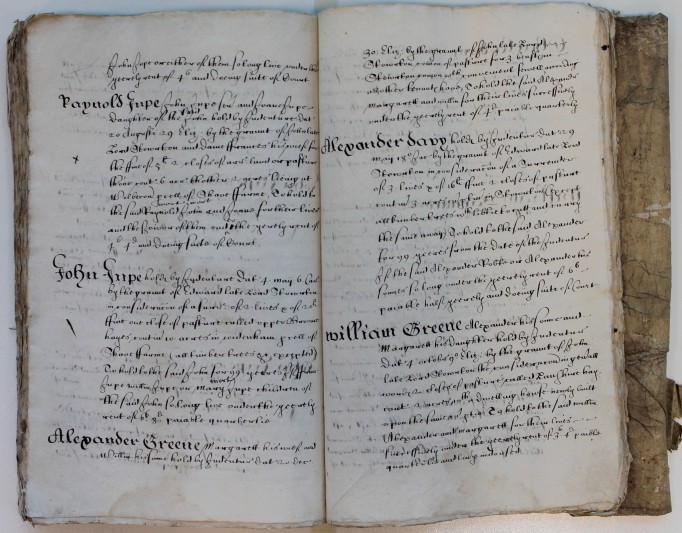The family of Stourton had associations stretching back to 11th century with the place of that name which was the centre of its estates in Wiltshire, Somerset, and Dorset. Its misfortunes in the 16th century were largely self- inflicted by Charles, 7th baron, who was executed for the murder of William and John Hartgill in 1557, leaving a son aged 4 years; the title and estates being restored to his son John only in 1575. Following the Reformation the family suffered for being Catholic and Royalist; its house was sacked during the Civil war and its estates were encumbered by debt. The house and estate were put up for sale in the early 18th century and Stourton in Wiltshire and Stourton Caundle in Dorset were purchased by Henry Hoare, the banker, who set about creating the house and gardens of Stourhead. It is probable that as a result of the family’s vicissitudes very few of its archives survive, which makes this survey of particular importance.
William succeeded his father Charles, 9th baron Stourton who died on 7 May 1633, and almost immediately appointed William Hussey and Robert Biflete as stewards to carry out the survey, which was completed in the following year. Although centred on Stourton, most of the manors were in Dorset, notably Gillingham, Lydlinch, Stourton Caundle in the north of the county and Overmoigne near Dorchester. The Somerset manors were Kingston by Yeovil and Frome Selwood. Penleigh in Westbury was the other Wiltshire manor.
The volume will be of value to both the family historian, in providing names of freeholders, tenants and the lives on the leases and copyhold admissions, and the local historian with considerable topographical detail. Examples include Lydlinch pasture, in the manor of that name, is described as having been the site of Hinde house, which had lately burned down, while there is evidence of enclosure in Stourton Caundle and Buckhorn Weston, The church house, mill house and two mills, lately rebuilt, one grist, one malt in Stourton are mentioned, while at Penleigh in Westbury two tucking mills, provide evidence of the importance of the local woollen industry. Although typical of its type, the survey contains information unavailable in any other source and, with the assistance of the Friends of the National Libraries, it will now be accessible to a wider audience than ever before.

